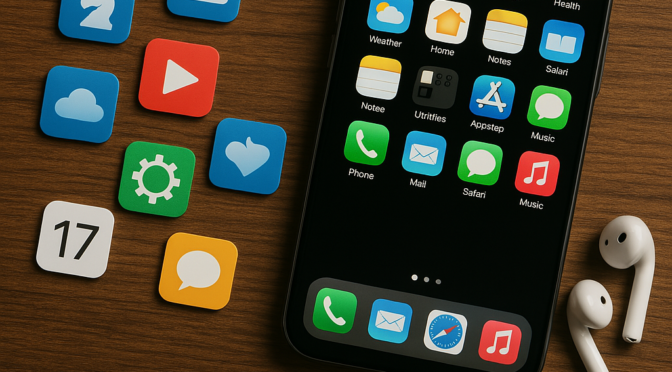The cloud is the most practical and secure way to store your photos. You’ll have continual access to a digital backup of your memories. You also won’t have to worry about overloading your hard disk or your smartphone. With cloud storage, you can share your photos as well, but providers also give the option to set privacy restrictions. They have state-of-the-art resources to keep them encrypted for you. There are certain features you need to look for in a cloud storage provider. Here are some of the top ones reviewed, both paid and free.
Tips for choosing cloud storage
Cloud storage is great for those working from home and sharing documents. It’s also ideal for backing up your photos. There are several key cloud storage features to look for when choosing a cloud storage provider. Cloud services come with an app so ensure this is compatible with your brand of smartphone or tablet. Not all providers are free, but they will offer a certain amount of space before you need to sign up for a subscription.
Generally, all providers accept JPEG files Certain providers will allow you to upload different types of files including TIFFS, RAW, and video or music files. Before signing up with a provider, it’s a good idea to calculate how much space you’re realistically going to need and for what type of files. This way, you can work out whether it’s worth paying for a subscription or not. If storage is becoming an issue for you, you also have the option to delete duplicate photos from your smartphone, this article explains how to do it, https://backlightblog.com/delete-iphone-duplicate-photos. It’s up to you whether you decide to move your photos to the cloud.
Top cloud storage providers
There are several big names in cloud storage and Google, Microsoft and Adobe all have their own version. Other top cloud storage providers include IDrive and pCloud. Here is a quick review of each.
IDrive
IDrive is great for photographers who use multiple devices and are concerned about security. It’s a very reliable cloud storage provider and has an excellent security rating. Your photos are protected by biometrics and you can set up face recognition for accessibility across all devices. The free plan allows a maximum of 5GB which can fill up quite quickly, depending on the number of photos and other files you have. If you need more space, you can upgrade to a yearly subscription. IDrive is user-friendly and fast. It also has features such as syncing photos and robust reporting tools.
pCloud
pCloud is ideal if you want to store files of various types. It’s not free but the provider offers a unique lifetime subscription for a one-off payment of £159 for 500GB or £309 for 2TB. There are also monthly plans available. pCloud provides state-of-the-art encryption and only the user will have access to their accounts, not even the company’s administrators. You can store any type of video or image file including RAW files, and you can share your files with up to four family members or your business. You can essentially send and receive large files to and from anyone. pCloud is a Swiss company and follows Swiss data laws, they also use first-class safety measures.
Google Photos
Google Photos offers storage for photos and videos and each Google account comes with up to 15GB for free. Google Drive is set up for file sharing and it’s easy for multiple users to access and edit files. It couldn’t be simpler to use although it isn’t the most stylish of platforms. It is, however, fully compatible with other apps as part of G Suite and can be synced with any devices and cameras with WiFi access. You can also top up your storage for as little as £1.59 per month for 100GB. The great thing about Google is that it also uses machine learning technology to label and archive photos, and makes suggestions to you based on your history and preferences. It uses metadata which allows you to find pictures easily based on date and place, and in general it’s very quick and convenient to use.
Microsoft OneDrive
Microsoft OneDrive provides a similar cloud storage service to Google, but is an integrated part of the Microsoft Office package. It is possible to use Microsoft OneDrive as a standalone deal, however, which is free up to 5GB and then £1.99 per month for up to 100GB. The other Microsoft Office apps aren’t included in these packages, so it depends on if you need them or not. The full Microsoft Office 365 starts at £5.99 a month. Microsoft OneDrive is easy to use and can be accessed on unlimited devices. While it’s not solely designed for photographers, it’s still a safe and convenient place to store your pictures.
Adobe Creative Cloud
Adobe Creative Cloud is more specifically aimed at photographers, professional and amateur alike. This does, however, mean it’s a little bit more expensive than other more basic cloud storage providers, but there are more advanced photography-based features such as stylish image libraries and editing options. Adobe offers a free trial for those interested and the basic photography app starts at just £9.98 a month. You can upgrade this to include all the Adobe apps for £49.94, which is a good deal for those with a passion for photography. Adobe Creative Cloud is compatible with Windows, MAC, Android, and iOS and you can upload all types of files from any device.
The cloud storage provider you choose depends on what you’re going to use it for, how many files you have, and which type. If you’re an experienced photographer or you want to develop your skills, Adobe Creative Cloud has more photography-based features. If you’re on more of a budget and simply want a backup of a few family photos, then a basic free cloud storage option is probably more suited to you. Upload and protect your memories on the cloud today.


